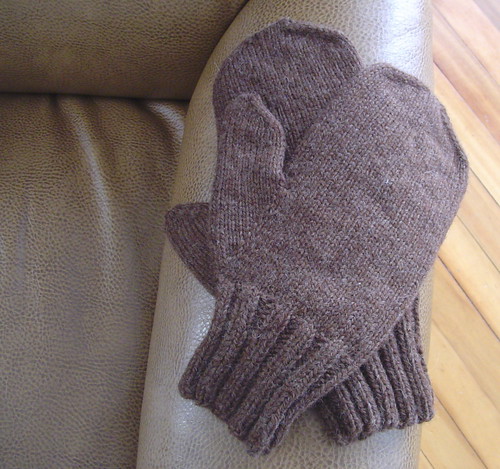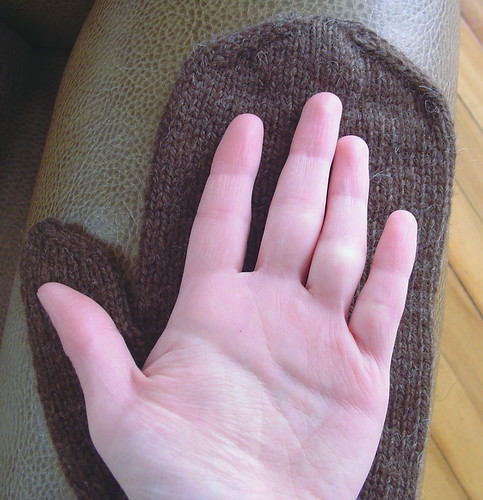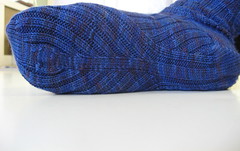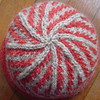Francie
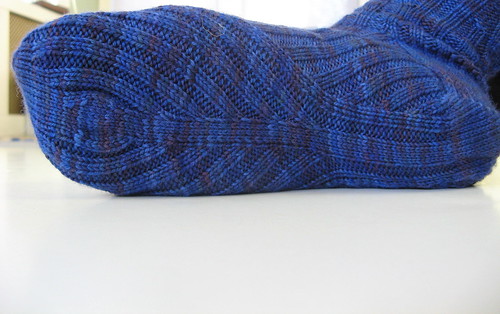
Some people called it the Tree of Heaven. No matter where its seed fell, it made a tree which struggled to reach the sky.
-- Betty Smith, A Tree Grows In Brooklyn
These socks are named for Francie Nolan, the main character in my favorite book, A Tree Grows In Brooklyn. Like the book, and like Francie, the socks are full of unexpected beauty and character. There are stories hidden in their folds, interesting shapes to be found in their bark, and new ideas to be found in their branches.

These socks were designed with an adventurous knitter in mind. While the leg of the socks is easier to execute than it might appear at first glance, the foot of the socks involves shaping that is probably new to most sock knitters. This shaping results in interesting curves in new places, a foot-hugging contour that surpasses the comfortable clinging power of most traditional ribbed socks, and a new way to shape a toe. The socks may take a bit more concentration than you’re used to, particularly once you get to the foot, but once you find the rhythm of these socks everything should fall into place.

(photo used with the permission of Natalie)
These socks were knit with Dream In Color Smooshy, at 8 stitches per inch, on U.S. size 1 (2.25 mm) DPNs. You can use any sock yarn you like, preferably in a solid or nearly-solid color. This sock is very stretchy, and will fit a wide range of foot sizes. You can easily customize the fit of the leg and foot by changing needle sizes, to make the circumference a bit wider or a bit narrower. Because the entire sock is based on 2x2 ribbing, the sizing range is generously large. There are instructions in the pattern for customizing the length of the leg and foot of the sock.
Because these socks are a bit different than your average socks, those of you who have knit socks before will have an easier time with this pattern. There is no one skill in these socks that is difficult, but they may take more concentration than your average sock pattern until you get into their unique rhythm. Those of you who can read your knitting (see the difference between knit and purl stitches) will have an easier time with this pattern, although I try to give as much instruction as is reasonably possible. I found them really fun to knit, because I was doing things I'd never quite done before, and it was exciting to see how it would all turn out in the end! There is a lot of new stuff in these socks, and if you like new stuff in your knitting, I think you'll really enjoy knitting this pattern.
The Francie pattern is available for sale right now, as a PDF download. I am using Ravelry's new pattern delivery system, which means that pattern delivery is automatic -- no more waiting for me to email you anything! You do not need to be a member of Ravelry to use the system, although if you are, you have the option to add the PDF directly to the library in your notebook, which is very convenient. The cost of this pattern is $6.50, and you can click the button below to purchase it:
Here is a direct link to the Ravelry page for the pattern.
(Please keep in mind that if you use an e-check, the pattern will not be delivered until the check clears. I believe this can take up to 10 days. I do keep an eye on my Paypal account on a daily basis, to make sure that everyone who has paid by e-check gets their patterns as soon as possible after the check clears, because I know that it is difficult to wait!)
Let me know if you have any problems with payment or with receiving your copy of the pattern. And of course, please contact me if you have any difficulties with the pattern. It has been test knitted by the wonderful and talented Natalie, and proof-read and tweaked until my eyes bled, so I hope it is free of errors. If I (or anyone else) find major errors, I will update the PDF and send new copies to those who have already purchased it. I am quite proud of this pattern, and want to make sure that it brings as much joy to others as it has to me.

Oh, and the contest winner! I was a bit embarrassed when the very first person to guess figured out the origin of the pattern name. I thought it must have been much too easy, but was relieved when most of the rest of the contest participants didn't have a clue. Congrats to Dove for being the first person to not only enter the contest, but to enter with the correct answer. Boy are you fast! Please send me an email at the email address in the sidebar, and I will send you a copy of the pattern. Thank you to everyone else who entered. Your guesses really entertained me.

Oh, and here's the legal mumbo jumbo from the end of the pattern. There has been a lot of discussion on Ravelry lately about this sort of stuff, and I have come to the conclusion that it is best to put this information here, as well as in the PDF. The short story is that use the pattern however you want for personal use. The long story is:

Labels: contest, designing, finishedproject, Francie, pattern, socks



